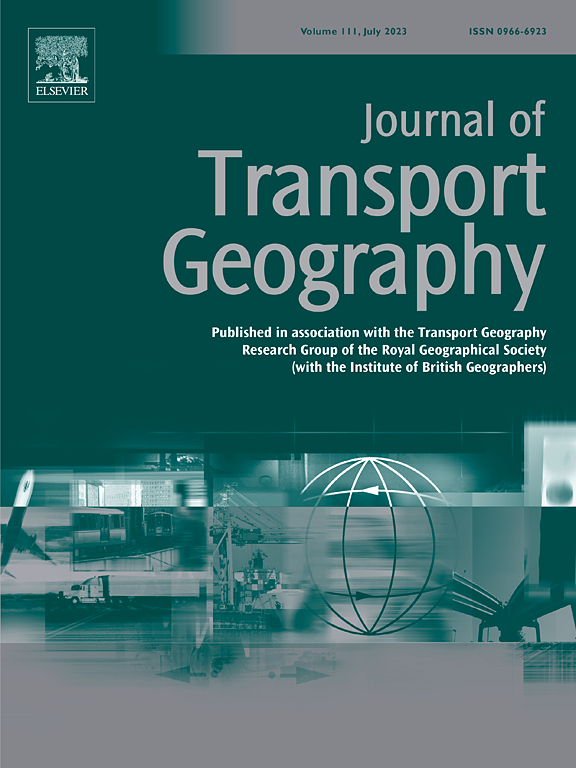Differences in bike-sharing usage and its associations with station-surrounding characteristics: A multi-group analysis using machine learning techniques
IF 5.7
2区 工程技术
Q1 ECONOMICS
引用次数: 0
Abstract
The bike-sharing system offers a wide range of benefits to promote human mobility for all. However, many bike-sharing systems are most used by specific demographic groups (e.g., younger people and males), suggesting that the resulting benefits are not equally distributed among the public. We aim to empirically examine the differences in bike-sharing usage among varying demographic groups and its association with station-surrounding characteristics (i.e., land use, transportation infrastructure, and population distribution) in Tartu (Estonia) using a machine learning approach (i.e., gradient boosting decision trees). The results revealed that the floor area ratio played an extremely important role in promoting bike-sharing usage, but such a strong positive impact was not observed within senior groups. Instead, bike-sharing usage by seniors was strongly positively associated with the commercial land and bike lanes. It also detected that male teenagers and young adults were less likely to be influenced by the public land than their female counterparts when using shared bikes. Shared bikes located in areas with dense male senior residents gained high usage by them; however, such phenomenon was not observed from their female counterparts. These findings can provide significant insights for interventions targeting demographic-specific bike-sharing usage to promote inclusivity and equity in urban transportation.
共享单车使用的差异及其与车站周围特征的关联:使用机器学习技术的多组分析
共享单车系统为促进所有人的流动性提供了广泛的好处。然而,许多共享单车系统主要由特定人口群体(如年轻人和男性)使用,这表明共享单车带来的好处并没有在公众中平均分配。我们旨在利用机器学习方法(即梯度提升决策树),实证研究爱沙尼亚塔尔图市不同人口群体之间共享单车使用率的差异及其与站点周边特征(即土地利用、交通基础设施和人口分布)之间的关联。结果显示,容积率在促进共享单车的使用方面发挥了极其重要的作用,但在老年群体中却没有观察到如此强烈的积极影响。相反,老年人使用共享单车与商业用地和自行车道密切相关。研究还发现,与女性相比,男性青少年和年轻人在使用共享单车时受公共用地影响的可能性较小。在男性老年居民密集的地区,共享单车的使用率较高,但在女性老年居民中却没有观察到这种现象。这些发现可以为针对特定人群使用共享单车的干预措施提供重要启示,从而促进城市交通的包容性和公平性。
本文章由计算机程序翻译,如有差异,请以英文原文为准。
求助全文
约1分钟内获得全文
求助全文
来源期刊

Journal of Transport Geography
Multiple-
CiteScore
11.50
自引率
11.50%
发文量
197
期刊介绍:
A major resurgence has occurred in transport geography in the wake of political and policy changes, huge transport infrastructure projects and responses to urban traffic congestion. The Journal of Transport Geography provides a central focus for developments in this rapidly expanding sub-discipline.
 求助内容:
求助内容: 应助结果提醒方式:
应助结果提醒方式:


